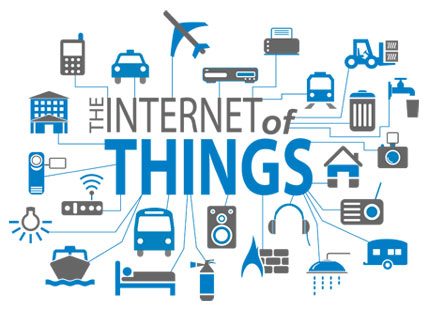You may well have heard the term ‘Internet of Things’ in the last few years, but if not you’ll likely start hearing it soon, as it’s here and it’s getting bigger all the time. Read on for all the details on what it is, why it’s useful, what it’s used for and what the future holds for it.
What is it?

The Internet of Things is the idea of everyday objects with network connectivity. So rather than just phones and computers being connected to the internet it would also be cars, washing machines, thermostats, televisions, street lights and just about anything else you can think of.
This connectivity would not only allow you to control them from afar but also allow them to communicate and share data with one another. An internet connected self-driving car for example could receive data from other cars or even the road itself to know how much traffic there was and how fast other vehicles were moving.
Or to use an example provided by Ofcom, low-cost wirelessly connected machine-to-machine (M2M) sensors could be sown into fields to measure moisture at different depths below ground. That information would then be sent wirelessly to a central control system, which would send water only to the crops that need it and at the optimum rate to minimise waste.
Then, after harvest, M2M communications could be used to monitor and control the storage conditions of crops, reducing energy costs and wastage while improving food quality.
These are just several examples of the thousands of ways in which connected devices could make life easier, cheaper and more efficient.
What’s it currently used for?
The Internet of Things is already here to some extent, with over 40 million devices connected via the Internet of Things in the UK alone.
For the most part these are fairly small scale things, like smart thermostats such as Google’s Nest Learning Thermostat, which can tell when you leave the house and lower the temperature accordingly so as not to waste energy, as well as adapting and learning based on your routine and how long it takes to heat your house.
But there are already larger plans in action or in the works. For example Glasgow is set to put sensors on streetlights and traffic lights which inform the relevant authorities of when bulbs need changing.
Why is it useful?

The cases above already highlight how the Internet of Things is useful, but ultimately it could lead to less congested roads, better quality food, less wasted energy, less spent money and an easier life. Sensors and the ability to communicate could be added to almost anything to automate processes and identify and fix problems.
What’s next?
Ofcom has committed to supporting the Internet of Things and is planning for its future accordingly. It’s estimated that the current figure of 40 million+ connected devices in the UK will grow more than eight-fold by 2022, with hundreds of millions of devices carrying out more than a billion daily data transactions, while globally up to 50 billion smart devices could be connected to the internet by 2020, so the Internet of Things is set to become a big part of life.
These devices will be both small scale things, such as the home automation abilities found in smart appliances and larger scale projects, some of which could transform entire cities.
Ofcom has already released spectrum for M2M uses, making the UK one of the first countries in Europe to do so, and it has identified four areas to focus on in order to help the Internet of Things grow unhindered and reach its full potential.
Those areas are:
Spectrum availability, as the requirement for devices to communicate wirelessly means available spectrum is vital.
Data privacy, as with machines collecting and sharing data there may be privacy issues which need to be addressed.
Network security and resilience, as once people’s lives become more and more automated by the Internet of Things it’s vital that the networks underpinning it don’t encounter problems.
And Network addressing, as bespoke address systems or the relatively new IPv6 Internet Protocol will likely be required to support connections between all these devices, so Ofcom will monitor the progress being made by internet service providers in supporting IPv6 connectivity.
With all that infrastructure in place the UK should be well equipped to make the most of the Internet of Things, allowing for everything from smart energy grids, which match power generated to consumers’ energy needs, to intelligent traffic management, which would use sensors to detect congestion and automatically impose variable speed limits and even automatically communicate with cars to direct them along diverted routes, not to mention supporting a whole bunch of applications that haven’t even been dreamed up yet.
Image credit : OEM Sensors








